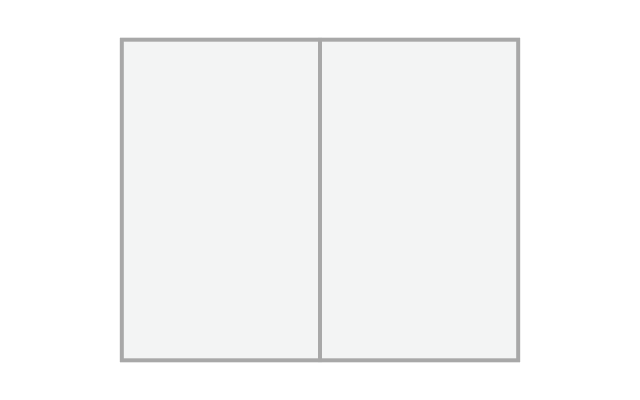how to draw the golden ratio
golden ratio
a geometric proportion that has been theorized to be the about aesthetically pleasing to the middle (also known as golden section, gold mean, golden number, divine proportion, and phi)
gilt rectangle
the "perfect" rectangle that uses the golden ratio; it is created using these steps:
- describe a perfect foursquare and split it in half
- draw a diagonal line that connects reverse corners of one half
- rotate the diagonal until it aligns with the side of the square
- extend the square to the end of the flattened diagonal
golden rectangle visual interest points
points are generated by drawing diagonals to the corners and putting focus on the halfway bespeak to the center - this is sometimes referred to every bit the "eyes of the rectangle"
golden screw
circular arcs are fatigued connecting the opposite corners of intersections created by gilded rectangles
root ii rectangle
this rectangle can be infinitely subdivided into the aforementioned proportion; it is created using these steps:
- depict a perfect square
- describe a diagonal line that connects reverse corners
- rotate the diagonal until it aligns with the side of the square
- extend the square to the end of the flattened diagonal
double foursquare
this rectangle is simply made of two perfect squares:
- draw a perfect foursquare
- duplicate the foursquare
- unite the ii squares
fibonacci series
a series of numbers in which each number is the sum of the ii preceding numbers
fibonacci spiral
circular arcs are drawn connecting the opposite corners of squares whose lengths are a sequence of fibonacci numbers
rule of thirds
dividing a composition into thirds (nine equal parts) and aligning important compositional elements to the imaginary lines or their intersections
Grid Anatomy
Grids are used as guidelines for aligning elements. A page filigree ordinarily consists of the following:
margin
a distance from the edges (negative space) that defines the live area
modules
individual intervals of space, typically inside the margins
gutter
the space betwixt the modules
cavalcade
vertical module groups that create horizontal divisions
row
horizontal module groups that create vertical divisions
flow lines
horizontal lines created across the space between the margins
spatial zones
groups of next modules that define a section
marker
a placement indicator for repeating elements, such every bit page numbers, running heads or footers
Grid Types
Below is an introduction to different grid types. Grids can be unproblematic or fabricated very complex using a variety of shapes and sizes. Grids tin can also explore different angles as well equally iii-dimensional space.
block grid
the simplest grid; elements come across the folio to the margins - also chosen a manuscript grid
column grid
dividing a page into equal or diff columns
modular grid
dividing a page horizontally and vertically into as defined spaces
hierarchical grid
this is a custom grid used to intuitively identify elements based on their position and dominance
radial filigree
an elliptical division of the folio - often used in conjunction with horizontal and/or vertical modules
triangular filigree
dividing a page using triangles

classic proportion filigree
above is another example of how a volume's text block might be designed using divisions of the page to create a filigree system
Source: https://artofficialintel.com/grid.html
Posted by: dipalmadight1942.blogspot.com


0 Response to "how to draw the golden ratio"
Post a Comment